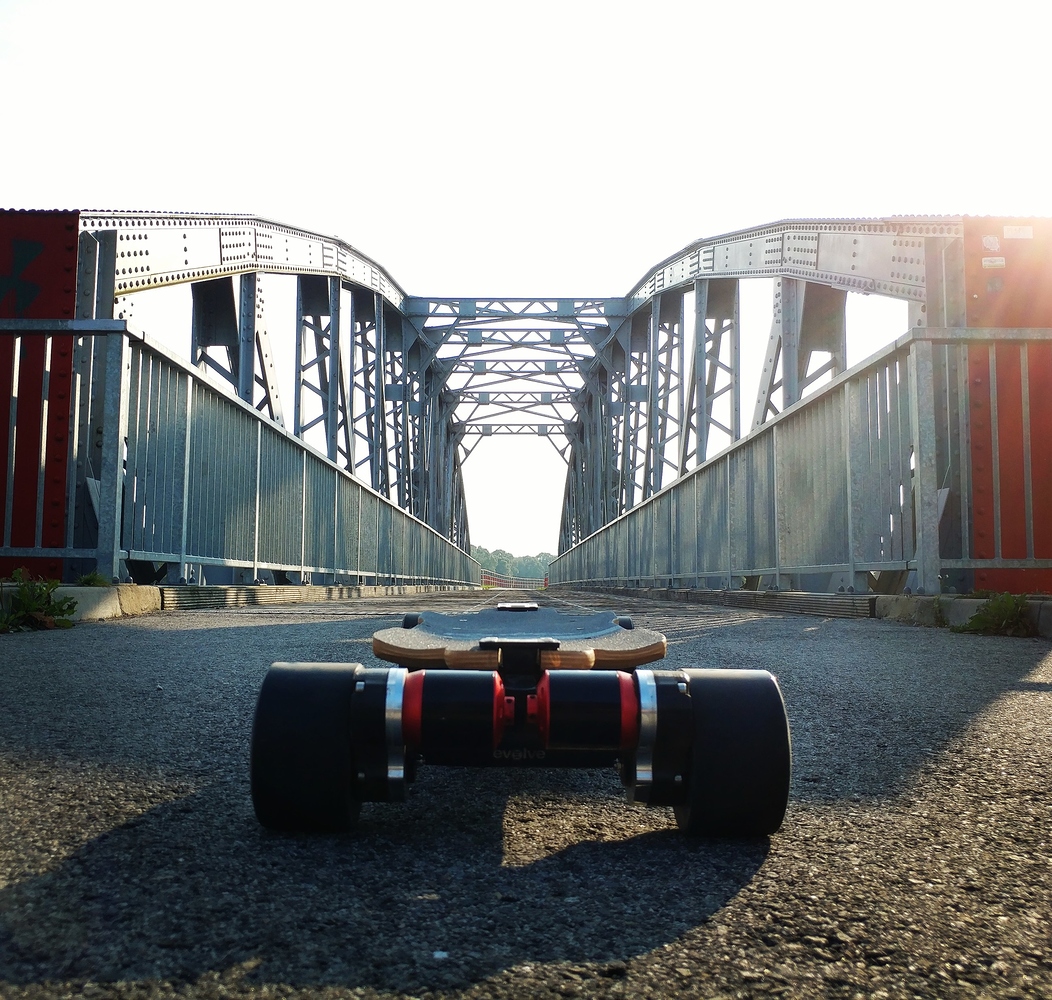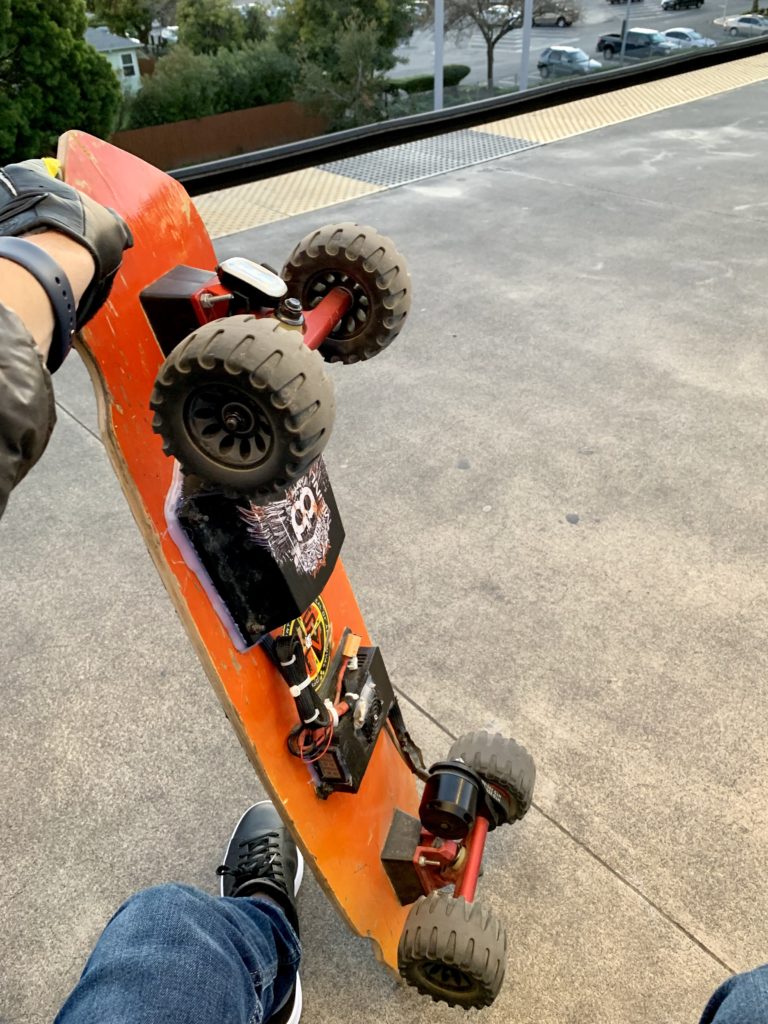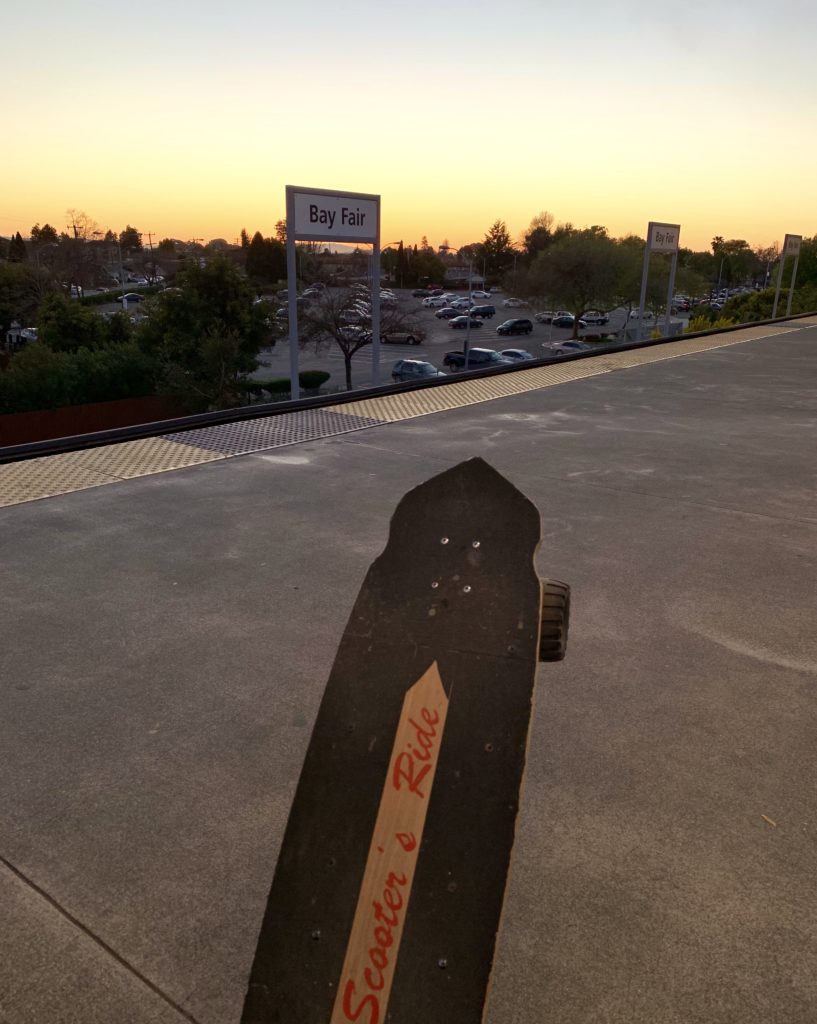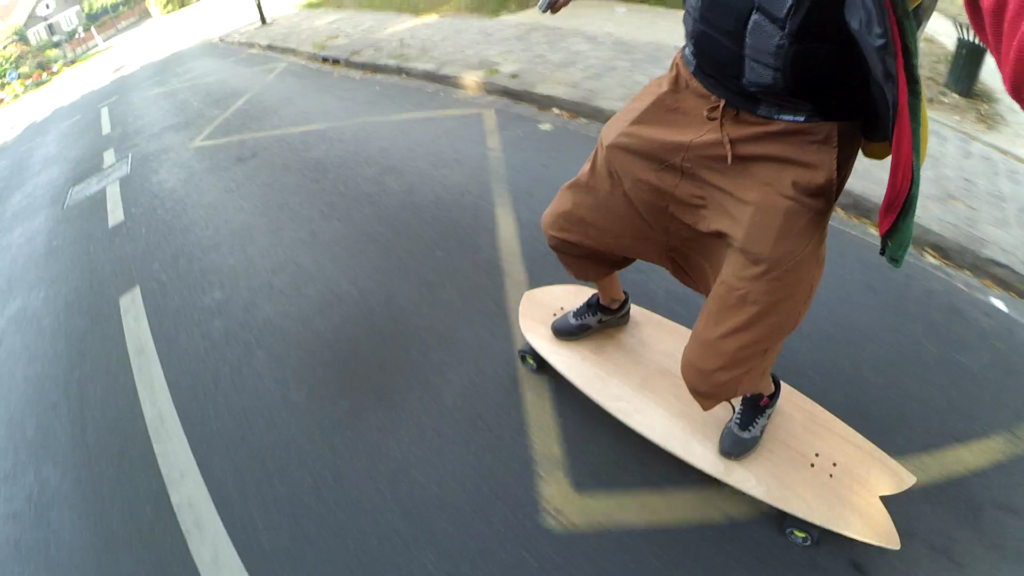
(featured image credit to Idea)
Normally, I take a car to and from where I need to go because my daily commute is usually 20 miles each way, without train service. However, I’ve recently been able to start commuting via esk8 and Bart (the train service to and from San Francisco) due to an internship. Here’s my experience so far, and what I would look for in a commuting board based on that experience.
Finding the Right Vehicle
For the purposes of this commute, I knew I would have to use a tested machine. Since most of my builds are experimental, it’s hard to call them reliable. I was going to build a board with a battery backpack, but decided that now is not the time to continue experimenting. That being said, I ended up borrowing an older build that I gave away, and I am astounded at how well it held up. The owner has used it daily for the last 2.5 years, and the only maintenance has been a bearing swap, wheel swap, and loop key replacement. The battery has been fully charged & discharged twice a day, 5 days a week, and has well over 1000 cycles on it. The belt has never been changed. It’s been ridden constantly, rain or shine, and still keeps ticking despite zero efforts of waterproofing other than the battery enclosure. Talk about durability!


Because of the nature of my commute (quick turns and avoiding people in SF), I knew that it would be nice to have a small, light board with a kick-tail. Well, I only ended up ticking two of those boxes but it’s not that bad. The board is large, sure, but I am a tall dude so that helps me out with balance. I also don’t have to worry about the size on Bart because it fits rather nicely under the seats. It certainly is not light, but I really only have to carry it up two sets of stairs. The rest of the time I’m either riding or sitting on the train.
Range
My biggest concern about this after hearing how ridiculously durable it’s been was the battery. Sure, it works, but it was only 8.8ah to begin with so the range has depleted quite a bit after so many charges. I left home an hour early on my first day so that if it died I would be able to call a taxi, go home, grab my bike, and still get to my internship on time. I ended up having about 25% left going from my house to the train and the train to my work. I calculated the total distance, and it’s only about 4 miles each way. Clearly, time has taken its toll on the battery. This kind of range really isn’t a big deal though, since I can charge at work. I tend to get home with a little more left than the other direction, since I have to go up some slight hills in SF. Additionally, there are almost no cars on the road in my hometown after 7pm, so I turn on the headlight that the board has and ride the smooth pavement as much as possible.

Let’s Talk about Humans
People are sloooooow. And oblivious. It amazes me how many people I see on their phones, going slowly, not even paying attention to walking signs and just crossing anyways. As a skater in SF, I truly wonder how bikes put up with it every day since they get the worst of both worlds. I stick to sidewalk and weave in and out of people for the most part, but bikers use bike lanes that are usually taken over by turning cars or buses, and when there aren’t bike lanes the bikers have to deal with pedestrians who keep telling them to get off the sidewalk and go on the road. The good news is, SF is slowly expanding their bike lane size and network, so I’m hopeful for the future. Thumbs up to that!

Thoughts?
I am really loving this commute so far, the ups and downs of all of it. Based on my experience in these first few days, I would really say that the top priority of a commuter board has to be reliability. Sure, range is a factor, but if the board doesn’t work then it doesn’t matter because in that situation range may as well be zero. I’m super happy that something I built in such a simple manner so long ago has held up this well, and I’m loving the kick-tail more than I ever thought I would. So, that leaves me with a few things:
What do you think? Would you commute on an electric skateboard if you had the opportunity? I’ll be writing a “Part 2” as this continues, where I’ll flesh out in more depth the parts and features that are really important to a commuter build. If you have any advice, feel free to share in the comments.
Based on how this goes, I might sell my car at the end of summer and never look back. Let’s hope that becomes a real possibility!
- Enertion – A Eulogy. - February 1, 2020
- EnertionBoardsUSA – A New Hope - November 11, 2019
- OG Carvons – A Comprehensive Review - November 2, 2019
